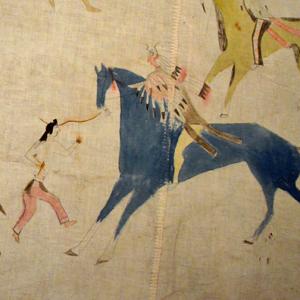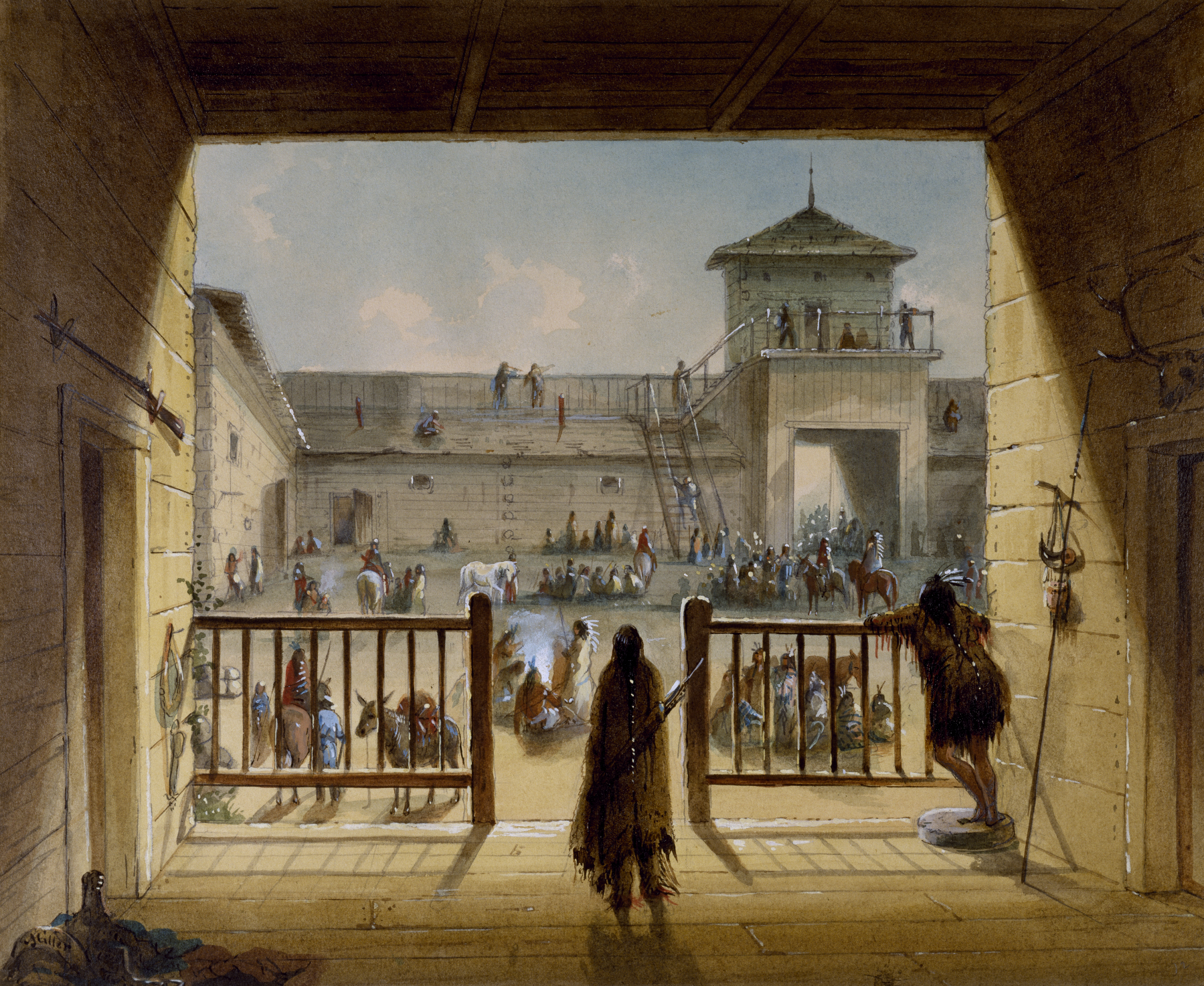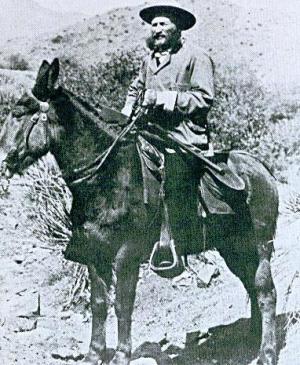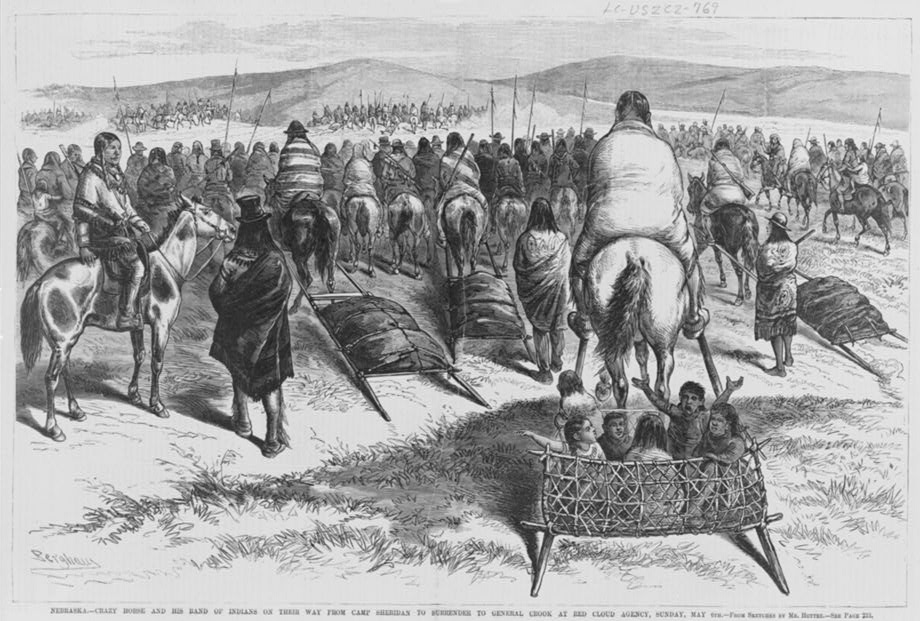|
Grant Short Bull
Grant Short Bull (Lakota language, Lakota: Tȟatȟáŋka Ptéčela; – 1935) was a member of Soreback Band, Oglala Lakota, Oglala Lakota people, Lakota, and a participant in the Battle of the Little Bighorn. He became a headman during the early twentieth century on the Pine Ridge Indian Reservation. Early life Born about 1851-52 near Fort Laramie, Short Bull was the son of a minor Oglala Lakota, Oglala headman named Black Rock and his wife Scatter the Feather. Short Bull was the younger brother of the prominent Oglala He Dog. A member of the family band called the ''Cankahuhan'' or Soreback Band (Oglala), Short Bull was among those who remained away from the agencies in an attempt to enjoy the traditional life for as long as possible. Great Sioux War of 1876-77 Short Bull was with the Soreback band on the Tongue River in January 1876 when the government's ultimatum was delivered to the northern bands. Short Bull later recalled that they agreed they would go in to the Red Cloud ... [...More Info...] [...Related Items...] OR: [Wikipedia] [Google] [Baidu] |
Arnold Short Bull
Arnold Short Bull (Lakota language, Lakota: Tȟatȟáŋka Ptéčela; c. 1845 – 1915) was a member of the Sičháŋǧu (Brulé) Lakota people, Lakota tribe of Native Americans, instrumental in bringing the Ghost Dance movement to the Rosebud Reservation. Early life Short Bull was born near the Niobrara River in present-day Nebraska in the mid-1940s. In 1876, he fought at the Battle of Little Bighorn. At the time, he lived on the Pine Ridge Indian Reservation, Pine Ridge Reservation, adjacent to the Rosebud Reservation. Ghost Dance, 1890-91 In 1889, Short Bull, his brother-in-law Kicking Bear, and eight other Lakota traveled to Nevada to visit the Paiute Indian Tribe of Utah, Paiute medicine man, Wovoka. They returned to the Pine Ridge Reservation in 1890 with news of the Ghost Dance, a dance that would restore Lakota culture to the land. The two became ranking apostles of the movement to the Brulé at Rosebud Reservation. Short Bull preached a militant and apocalyptic vision o ... [...More Info...] [...Related Items...] OR: [Wikipedia] [Google] [Baidu] |
Pine Ridge Indian Reservation
The Pine Ridge Indian Reservation (), also called Pine Ridge Agency, is an Oglala Lakota Indian reservation located in the U.S. state of South Dakota, with a small portion extending into Nebraska. Originally included within the territory of the Great Sioux Reservation, Pine Ridge was created by the Act of March 2, 1889, 25 Stat. 888. in the southwest corner of South Dakota on the Nebraska border. It consists of of land area and is one of the largest reservations in the United States. The reservation encompasses the entirety of Oglala Lakota County and Bennett County, South Dakota, Bennett County, the southern half of Jackson County, South Dakota, Jackson County, and a small section of Sheridan County, Nebraska, Sheridan County added by Executive Order No. 2980 of February 20, 1904. Of the 3,142 counties in the United States, these are among Lowest-income counties in the United States, the poorest. Only of land are suitable for agriculture. The United States Census, 2000, 2000 c ... [...More Info...] [...Related Items...] OR: [Wikipedia] [Google] [Baidu] |
Oglala Lakota
The Oglala (pronounced , meaning 'to scatter one's own' in Lakota language, Lakota) are one of the seven subtribes of the Lakota people who, along with the Dakota people, Dakota, make up the Sioux, Očhéthi Šakówiŋ (Seven Council Fires). A majority of the Oglala live on the Pine Ridge Indian Reservation in South Dakota, the eighth-largest Indian reservation, Native American reservation in the United States. The Oglala are a List of federally recognized tribes, federally recognized tribe whose official title is the called the Oglala Sioux Tribe of the Pine Ridge Reservation, South Dakota. History Oglala elders relate stories about the origin of the name "Oglala" and their emergence as a distinct group, probably sometime in the 18th century. Conflict with the European settlers In the early 19th century, Europeans and American passed through Lakota territory in increasing numbers. They sought furs, especially beaver fur at first, and later bison fur. The fur trade changed th ... [...More Info...] [...Related Items...] OR: [Wikipedia] [Google] [Baidu] |
Lakota People
The Lakota (; or ) are a Native Americans in the United States, Native American people. Also known as the Teton Sioux (from ), they are one of the three prominent subcultures of the Sioux people, with the Eastern Dakota (Santee) and Western Dakota (). Their current lands are in North Dakota, North and South Dakota. They speak — the Lakota language, the westernmost of three closely related languages that belong to the Siouan languages, Siouan language family. The seven bands or "sub-tribes" of the Lakota are: * (, Burned Thighs) * ("They Scatter Their Own") * (, Without Bows) * (Hunkpapa, "End Village", Camps at the End of the Camp Circle) * (Miniconjou, "Plant Near Water", Planters by the Water) * ("Blackfeet" or "Blackfoot") * (Two Kettles) Notable Lakota persons include (Sitting Bull) from the , (Touch the Clouds) from the Miniconjou; (Black Elk), (Red Cloud), and (Billy Mills), all ; (Crazy Horse) from the and Miniconjou, and (Spotted Tail) from the ... [...More Info...] [...Related Items...] OR: [Wikipedia] [Google] [Baidu] |
Battle Of The Little Bighorn
The Battle of the Little Bighorn, known to the Lakota people, Lakota and other Plains Indians as the Battle of the Greasy Grass, and commonly referred to as Custer's Last Stand, was an armed engagement between combined forces of the Lakota Sioux, Northern Cheyenne, and Arapaho tribes and the 7th Cavalry Regiment of the United States Army. It took place on June 25–26, 1876, along the Little Bighorn River in the Crow Indian Reservation in southeastern Montana Territory. The battle, which resulted in the defeat of U.S. forces, was the most significant action of the Great Sioux War of 1876. Most battles in the Great Sioux War, including the Battle of the Little Bighorn, were on lands those natives had taken from other tribes since 1851. The Lakotas were there without consent from the local Crow tribe, which had a treaty on the area. Already in 1873, Crow chief Blackfoot had called for U.S. military actions against the native intruders. The steady Lakota incursions into treaty ar ... [...More Info...] [...Related Items...] OR: [Wikipedia] [Google] [Baidu] |
Lakota Language
Lakota ( ), also referred to as Lakhota, Teton or Teton Sioux, is a Siouan languages, Siouan language spoken by the Lakota people of the Sioux tribes. Lakota is mutually intelligible with the two dialects of the Dakota language, especially Dakota language#Comparison of the dialects, Western Dakota, and is one of the three major variety (linguistics), varieties of the Sioux language. Speakers of the Lakota language make up one of the largest Native American language speech communities in the United States, with approximately 2,000 speakers, who live mostly in the northern plains states of North Dakota and South Dakota. Many communities have immersion programs for both children and adults. Like many indigenous languages, the Lakota language did not have a written form traditionally. However, efforts to develop a written form of Lakota began, primarily through the work of Christian missionaries and linguists, in the late 19th and early 20th centuries. The orthography has since evol ... [...More Info...] [...Related Items...] OR: [Wikipedia] [Google] [Baidu] |
Fort Laramie
Fort Laramie (; founded as Fort William and known for a while as Fort John) was a significant 19th-century trading post, diplomatic site, and military installation located at the confluence of the Laramie and the North Platte Rivers. They joined in the upper Platte River Valley in the eastern part of the present-day US state of Wyoming. The fort was founded as a private trading post in the 1830s to service the overland fur trade; in 1849, it was purchased by the United States Army. The site was located east of the long climb leading to the best and lowest crossing over the Rocky Mountains at South Pass and became a popular stop for migrants on the Oregon Trail. Along with Bent's Fort on the Arkansas River, the trading post and its supporting industries and businesses were the most significant economic hub of commerce in the region. Fort William was founded by William Sublette and his partner Robert Campbell in 1834. In the spring of 1835, Sublette sold the fort to Thomas ... [...More Info...] [...Related Items...] OR: [Wikipedia] [Google] [Baidu] |
He Dog
He Dog (Lakota: Šúŋka Bloká) (ca. 1840–1936), a member of the Oglala Lakota, was closely associated with Crazy Horse during the Great Sioux War of 1876-77. Biography Born in the spring of 1840 on the headwaters of the Cheyenne River near the Black Hills, He Dog was the son of a headman named Black Stone and his wife, Blue Day, a sister of Red Cloud. His youngest brother was Grant Short Bull. By the 1860s, He Dog and his brothers had formed a small Oglala Lakota band known as the Cankahuhan or Soreback Band which was closely associated with Red Cloud's Bad Face band of Oglala. He Dog and his relatives participated in the Great Sioux War of 1876-77. After the treaty commission failed to persuade the Lakota to give up the Black Hills, the President had an ultimatum sent in January 1876 to the northern bands to come into the agencies or be forced in by the army. He Dog was encamped with the Soreback band on the Tongue River when the message was delivered. He Dog's bro ... [...More Info...] [...Related Items...] OR: [Wikipedia] [Google] [Baidu] |
Red Cloud Agency
The Red Cloud Agency was an Indian agency for the Oglala Lakota as well as the Northern Cheyenne and Arapaho, from 1871 to 1878. It was located at three different sites in Wyoming Territory and Nebraska before being moved to South Dakota. It was then renamed the Pine Ridge Reservation. Red Cloud Agency No. 1 (1871-1873) As stipulated in the Fort Laramie Treaty (1868), the US government built Indian agencies for the various Lakota and other Plains tribes. These were forerunners to the modern Indian reservations. In 1871, the Red Cloud Agency was established on the North Platte River near Fort Laramie. Two year later it was moved to an eastern corner of Nebraska, then two years later to South Dakota. Red Cloud Agency No. 2 (1873-1877) In August 1873, the agency was moved to the northwestern corner of Nebraska, near the present town of Crawford. Constructed on a hill overlooking the White River, the agency buildings included a large warehouse, offices, home for the ag ... [...More Info...] [...Related Items...] OR: [Wikipedia] [Google] [Baidu] |
George Crook
George R. Crook (September 8, 1828 – March 21, 1890) was a career United States Army officer who served in the American Civil War and the Indian Wars. He is best known for commanding U.S. forces in the Geronimo Campaign, 1886 campaign that led to the defeat of the Apache leader Geronimo. As a result, the Apache nicknamed Crook ''Nantan Lupan'', which means "Chief Wolf." Early life and military career Crook was born to Thomas and Elizabeth Matthews Crook on a farm near Taylorsville, Ohio. Nominated to the United States Military Academy by Congressman Robert Cumming Schenck, Robert Schenck, he graduated in 1852, ranking near the bottom of his class. He was assigned to the U.S. 4th Infantry Regiment, 4th U.S. infantry as brevet second lieutenant, serving in California, 1852–61. He served in Oregon and northern California, alternately protecting or fighting against several Native Americans in the United States, Native American tribes. He commanded the Pitt River Expedition of ... [...More Info...] [...Related Items...] OR: [Wikipedia] [Google] [Baidu] |
Crazy Horse
Crazy Horse ( , ; – September 5, 1877) was a Lakota people, Lakota war leader of the Oglala band. He took up arms against the United States federal government to fight against encroachment by White Americans, White American settlers on Native Americans in the United States, Native American territory and to preserve the traditional way of life of the Lakota people. His participation in several famous battles of the Black Hills War on the northern Great Plains, among them the Fetterman Fight in 1866, in which he acted as a decoy, and the Battle of the Little Bighorn in 1876, in which he led a war party to victory, earned him great respect from both his enemies and his own people. In September 1877, four months after surrendering to U.S. troops under General George Crook, Crazy Horse was fatally wounded by a bayonet-wielding military guard while allegedly resisting imprisonment at Fort Robinson, Camp Robinson in Pine Ridge (region), northwestern Nebraska. He was honored by ... [...More Info...] [...Related Items...] OR: [Wikipedia] [Google] [Baidu] |
Sitting Bull
Sitting Bull ( ; December 15, 1890) was a Hunkpapa Lakota people, Lakota leader who led his people during years of resistance against Federal government of the United States, United States government policies. Sitting Bull was killed by Indian agency police accompanied by U.S. officers and supported by U.S. troops on the Standing Rock Indian Reservation during an attempt to arrest him at a time when authorities feared that he would join the Ghost Dance movement. Before the Battle of the Little Bighorn, Sitting Bull had a vision in which he saw many soldiers, "as thick as grasshoppers", falling upside down into the Lakota camp, which his people took as a foreshadowing of a major victory in which many soldiers would be killed. About three weeks later, the confederated Lakota tribes with the Northern Cheyenne defeated the 7th Cavalry Regiment, 7th Cavalry under Lt. Col. George Armstrong Custer on June 25, 1876, annihilating Custer's battalion and seeming to fulfill Sitting Bull's ... [...More Info...] [...Related Items...] OR: [Wikipedia] [Google] [Baidu] |








